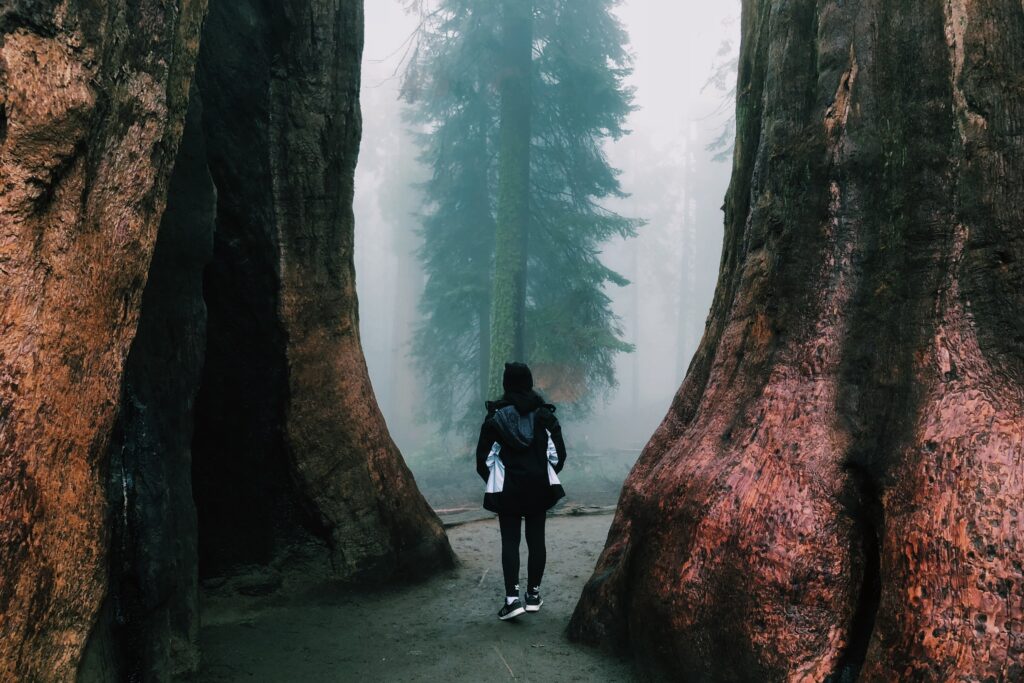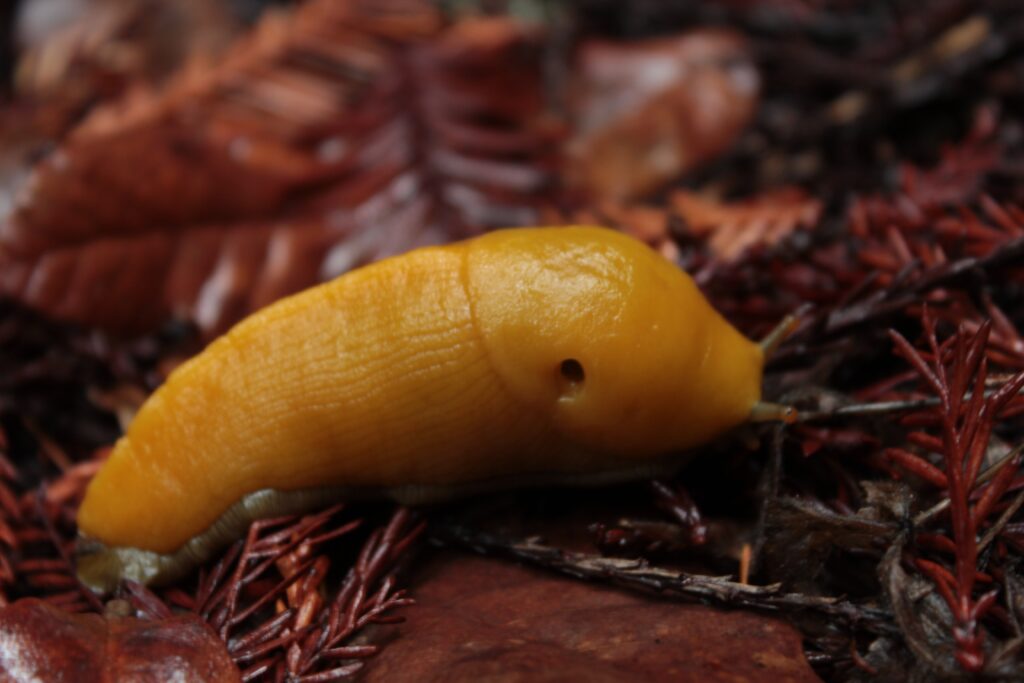Going on a wild escape? Redwood National and State Parks is just for you!
Feast your eyes on the tall, old-growth redwood forests. Be amazed by the tranquil beaches and diverse wildlife.
Don’t forget to be ready – this trip is a must-see!
Introduction
Experience the grandeur of Redwood National and State Parks, nestled in the heart of California.
Spanning over 130,000 acres, these majestic parks boast ancient redwoods that have stood for centuries.
Stroll along the trails and feel small in comparison to these awe-inspiring trees. Uncover secrets they hold and stories they could tell.
Discover a diverse ecosystem, from fern-covered forest floors to meandering rivers reflecting the sunlight.
Learn the true history behind these ancient giants. They have withstood storms, fires, and logging practices.
Redwood National and State Parks: where trees tower, history runs deep, and wildlife knows more about social distancing.
Location and History
Redwood National and State Parks, home to towering redwoods that stretch up to 300 feet tall, offer a unique experience.
Spanning over 139,000 acres across Del Norte and Humboldt Counties in California and into Curry County, Oregon, these parks were established in 1968 to preserve old-growth redwood forests from logging and development.
The parks provide stunning views of these majestic giants along with various hiking trails and wildlife viewing opportunities.
You can spot Roosevelt elk, black bears, mountain lions, and numerous bird species in this diverse habitat.
Plus, the parks have a special connection to Native American tribes, who have been living among the redwoods for thousands of years.
These tribes view the redwood trees as sacred and the parks work to preserve their traditional practices while also conserving natural resources.
In short, Redwood National and State Parks are a magnificent natural wonder and a reminder of the importance of conservation for future generations.
Geography
Redwood National and State Parks is a vast area along the coast of northern California, spanning 138,999 acres.
It’s home to some of the tallest living things on Earth – towering redwood trees reaching heights of over 350 feet. Rivers, prairies, and oak woodlands are also part of the ecosystem.
A table of key details:
| Feature | Details |
|---|---|
| Location | Northern California |
| Area | 138,999 acres |
| Coastline | 50 miles |
| Rivers | Klamath River, Smith River |
| Elevation Range | Sea level to 2,000 feet |
| Hiking Trails | Over 200 miles |
The parks have been awarded World Heritage site status, recognizing their exceptional beauty and importance to future generations.
Redwood National Park was established in 1968, marking a pivotal moment in conservation history.
Since then, additional land has been added to the park to ensure long-term preservation.
Be prepared for a wild adventure when you explore Redwood National and State Parks.
You’ll get to know its geography, as well as the tireless efforts made to safeguard this natural wonderland.
Climate
The Californian Redwood National and State Parks boast a unique climate.
Summers are cool, with temperatures ranging from 50 to 70 degrees Fahrenheit.
Winters are mild with temperatures rarely dropping below freezing. This region receives abundant rainfall, averaging around 60 inches per year.
The optimum conditions of temperate weather and ample moisture make the parks ideal for the growth of the famous redwood trees.
The climate plays an important role in the ecosystem. Moisture enables the flourishing of plants, like ferns, mosses, and lichens.
The cool climate is also hospitable to the diverse wildlife in the parks, such as black bears, elk, northern spotted owls, and marbled murrelets.
The coast is close, so fog frequently blankets the area. This fog provides valuable moisture to the redwood forest and helps keep it healthy.
Visitors to the parks should pack layers and be prepared for possible fog. Bring waterproof clothing and sturdy shoes to handle the elements.
Flora and Fauna
The Redwood National and State Parks boast a remarkable variety of flora and fauna.
Towering redwoods serve as a habitat for many creatures.

Wildlife abounds in the parks. Visitors may spot Roosevelt elk grazing in meadows or black bears scavenging for food.
Birdwatchers will be delighted by the array of species, including bald eagles, owls, and migratory birds.
Lesser-known creatures are also present. Banana slugs with their bright yellow bodies can often be seen slithering along forest floors.

Plus, river otters can be seen playing in streams and rivers inside the park boundaries.
To make the most of the parks’ flora and fauna, consider these tips:
- Take a guided nature hike with park rangers. They’ll provide insight into the park’s ecosystems and offer opportunities to spot various species and learn about their natural history.
- Visit the parks during different seasons. Spring brings wildflowers and newborn wildlife, while fall showcases vibrant colors as leaves change.
- Keep a respectful distance from wildlife. This ensures human safety and animal welfare, and allows them to maintain their natural behavior.
By following these suggestions, visitors can appreciate the incredible world of Redwood National and State Parks while preserving its delicate ecosystem.
Ecosystem
The ecosystem of Redwood National and State Parks is complex and diverse.
It consists of forests, rivers, meadows, coastal areas and more. These different ecosystems provide habitats to many wildlife species.
See the table below for more information:
| Ecosystem | Description |
|---|---|
| Forests | Redwoods dominate the forest landscape, creating a shaded understory with a rich diversity of plants and animals. |
| Rivers | Rivers flow through lush landscapes, providing habitats for salmon and steelhead, as well as shorebirds. |
| Meadows | Meadows are dynamic and change with the seasons, supporting elk herds and attracting birds. |
| Coastal Areas | Rugged cliffs, sandy beaches, tidepools, and sea stacks offer unique marine life such as seals and seabirds. |
Plus, Redwood National and State Parks also have geological formations like rocky outcrops and karst features.
Pro Tip: Explore the parks and follow all regulations to safeguard these fragile environments. Discover the interconnectedness of these diverse ecosystems and appreciate the natural beauty of the region.
Conservation
Redwood National and State Parks are dedicated to conservation.
They safeguard the majestic coastal redwoods of Northern California, to ensure their survival for future generations.
Education and research initiatives are actively promoted too. Sustainable practices and collaborations with organizations contribute to the wider conservation movement.
Unique conservation initiatives are taken on. The parks strive to create habitats that support diverse wildlife, and address issues related to invasive species.
Visitors are encouraged to participate in the mission too. Eco-friendly activities, such as hiking or biking, are suggested, to reduce environmental impact.
Additionally, visitors are asked to practice leave-no-trace principles, disposing of waste responsibly and respecting habitats.
Redwood National and State Parks serve as a model for land management agencies worldwide.
They demonstrate that successful conservation can be achieved through research, education, habitat protection and visitor engagement.
By following their lead, we can safeguard our natural treasures for generations to come.
Step into Redwood National and State Parks for wild adventures—where trees are tall and silent companions!
Recreation
Redwood National and State Parks offer a plethora of activities for all types of visitors.
From hiking and camping to wildlife watching and picnicking, the scenery is breathtaking.
Plus, you can go river rafting down the Smith River!
Explore ancient redwood forests with miles of scenic trails.
Pitch a tent in one of the park’s campsites and sleep beneath the redwoods.
Spot elusive wildlife like elk, bears, and eagles. Or find a peaceful spot to picnic.
Delve deeper into the area’s history and ecology with ranger-led programs and interactive exhibits at visitor centers.
And don’t forget – these parks are home to some of the tallest trees on Earth!
So why not question your own insignificance while taking in the majestic beauty?
Tourism
The Redwood National and State Parks are a stunning destination for tourists from around the world.
Here, visitors can marvel at the ancient redwood trees, explore the many hiking trails, and camp in designated areas.
Wildlife lovers can also observe elk, black bears, and cougars.
These parks are more than just a pretty scene, though.
They are a vital habitat for endangered species, like the marbled murrelet and northern spotted owl.
Plus, they provide educational programs to teach visitors about conservation and sustainable practices.
Interestingly, Redwood National and State Parks were created in 1968 from several smaller parks. This history can be found on their official website.
The future of this area is bright, offering a breathtaking experience that reminds us of our own size compared to nature.
Future
Redwood National and State Parks is set to be safeguarded for the future.
As custodians of this stunning natural landscape, plans are in place to make sure it is maintained for generations.
Let’s look at some of the park’s key projects:
| Project Name | Description | Estimated Completion |
|---|---|---|
| Trail Expansion | Making new trails for easier access | 2022 |
| Habitat Restoration | Restoring ecosystems for more species | 2023 |
| Visitor Center | Building a state-of-the-art building | 2024 |
In addition, there is an ongoing effort to collaborate with local communities and groups to promote sustainable practices around the park.
It is noteworthy that Redwood National and State Parks saw over 540,000 visitors in 2019, showing its importance as a great spot for wildlife and nature lovers. (Source: National Park Service)
Thanks to the commitment to conservation and progress, the future of Redwood National and State Parks is looking bright. It will keep drawing visitors from around the globe for many years to come.
FAQ
What are Redwood National and State Parks?
Redwood National and State Parks, located in Northern California, are a collection of protected areas known for their ancient coast redwood forests. They are jointly managed by the National Park Service and the California Department of Parks and Recreation.
How can I explore Redwood National and State Parks?
There are numerous hiking trails and scenic drives within the parks that allow visitors to explore the majestic redwood forests. You can also go camping, wildlife watching, fishing, and attend educational programs offered by the park rangers.
What is the best time to visit Redwood National and State Parks?
The parks are open year-round, but the summer months (June to August) generally offer the best weather for outdoor activities. However, if you prefer a more peaceful experience, consider visiting during the shoulder seasons of spring (April to May) or fall (September to October).
Are there any entrance fees to visit Redwood National and State Parks?
No, there are no entrance fees to enter any of the parks within the Redwood National and State Parks system. However, there may be fees associated with camping, certain guided tours, or other activities.
Can I bring my pets to Redwood National and State Parks?
Pets are allowed in certain areas of the parks, but they must be kept on a leash at all times. It’s important to follow all park regulations regarding pets to ensure the safety of both wildlife and visitors.
Are there any accommodations available within Redwood National and State Parks?
Yes, there are a few campgrounds available for overnight stays within the parks. Additionally, there are various lodging options in nearby towns and cities for those who prefer more comfort and amenities.
